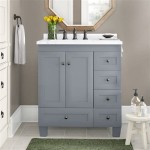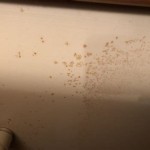How to Control Drain Flies in Bathrooms
Drain flies, also known as moth flies or sewer gnats, are small, nuisance pests that thrive in moist environments rich in organic matter. Bathrooms, with their abundance of drains, showers, and leaky pipes, provide ideal breeding grounds for these insects. While drain flies do not bite or transmit diseases, their presence is unsanitary and can be quite bothersome. Effective control requires a multi-pronged approach focusing on eliminating breeding sites and preventing future infestations. Understanding their life cycle, identifying problem areas, and implementing appropriate cleaning and preventative measures are crucial for achieving long-term relief from drain fly infestations.
Understanding Drain Fly Biology and Behavior
Drain flies belong to the family Psychodidae. These flies are typically small, measuring about 1/8 to 1/5 of an inch long. They are characterized by their fuzzy bodies and wings, which give them a moth-like appearance. Their coloration ranges from light tan to dark brown or black.
The life cycle of a drain fly consists of four stages: egg, larva, pupa, and adult. Female drain flies lay their eggs in stagnant water or moist organic debris commonly found in drains, sewer lines, and septic tanks. The eggs hatch within 32 to 48 hours into larvae. The larvae are slender, worm-like creatures that feed on organic matter. They thrive in the gelatinous film that accumulates on the interior walls of drains and pipes. Larval development typically takes between 9 and 15 days, depending on environmental conditions such as temperature and food availability.
Once the larvae are fully developed, they pupate. The pupal stage lasts for approximately 20 to 40 hours. The pupae are attached to the surfaces where the larvae developed. After the pupal stage, adult drain flies emerge. Adult flies are weak fliers and tend to remain close to their breeding sites. They are most active during the evening and night hours. A single female drain fly can lay up to 300 eggs, contributing to rapid population growth under favorable conditions.
Drain flies are attracted to decaying organic matter. This includes food waste, hair, soap scum, and other debris that accumulate in drains and pipes. Poor sanitation, inadequate ventilation, and leaky plumbing can exacerbate drain fly problems by providing ample breeding sites and moisture.
Identifying and Eliminating Drain Fly Breeding Sites
Locating the source of a drain fly infestation is essential for effective control. Drain flies tend to breed in areas with stagnant water and organic buildup. Key areas to inspect in bathrooms include:
- Sink Drains: Inspect the drain itself and the area around the drain stopper. Remove any hair, soap scum, or debris that may be present.
- Shower Drains: Shower drains are notorious for accumulating hair and soap residue, creating an ideal breeding ground for drain flies. Remove the drain cover and thoroughly clean the drain.
- Toilet Bowls and Tanks: While less common, drain flies can also breed in toilet bowls and tanks, especially if there are cracks or leaks that allow stagnant water to accumulate. Inspect the toilet for any signs of drain fly activity.
- Floor Drains: Floor drains are often overlooked, but they can harbor significant amounts of organic matter and stagnant water. Ensure that floor drains are clean and properly maintained.
- Leaky Pipes: Leaky pipes and plumbing fixtures provide constant moisture that can support drain fly breeding. Inspect under sinks and around toilets for any signs of leaks. Repair any leaks promptly to eliminate potential breeding sites.
- Standing Water: Check for any areas where water may be pooling, such as under potted plants or in drip trays. Eliminate any standing water to reduce humidity and discourage drain fly breeding.
Once breeding sites have been identified, thorough cleaning is necessary. Several methods can be used to eliminate organic matter and drain fly larvae:
- Mechanical Cleaning: Use brushes, pipe cleaners, or drain snakes to physically remove organic buildup from drain pipes. This can be particularly effective for removing hair and soap scum.
- Boiling Water: Pouring boiling water down the drain can help to dislodge organic matter and kill drain fly larvae. Repeat this process several times to ensure thorough cleaning.
- Commercial Drain Cleaners: Enzyme-based drain cleaners are designed to break down organic matter without damaging pipes. Follow the instructions on the product label and use regularly to prevent buildup. Avoid using harsh chemical drain cleaners, as they can be corrosive and may not effectively eliminate drain fly larvae.
- Baking Soda and Vinegar: A mixture of baking soda and vinegar can be used as a natural drain cleaner. Pour one cup of baking soda down the drain, followed by one cup of vinegar. Let the mixture fizz for 30 minutes, then flush with hot water.
It is important to repeat the cleaning process regularly to prevent drain flies from re-establishing their breeding sites. Consistency in cleaning and maintenance is key to controlling drain fly populations.
Implementing Preventative Measures
Preventing drain flies from returning requires ongoing efforts to maintain a clean and dry environment. Several preventative measures can be implemented to minimize the risk of future infestations:
- Regular Drain Cleaning: Establish a routine for cleaning drains regularly. This can involve using enzyme-based drain cleaners, flushing with boiling water, or using mechanical cleaning tools.
- Proper Ventilation: Ensure that bathrooms are well-ventilated to reduce humidity levels. Use exhaust fans during and after showers and baths. Open windows when possible to promote air circulation.
- Repairing Leaks: Promptly repair any leaks in plumbing fixtures to eliminate sources of moisture. Even small leaks can provide enough water for drain flies to breed.
- Proper Waste Disposal: Avoid pouring food waste or grease down drains. Dispose of these materials in the trash or compost bin to prevent organic buildup in drains.
- Drain Screens: Install drain screens in sinks, showers, and floor drains to prevent hair and other debris from entering the pipes. Clean the screens regularly to ensure that they are functioning properly.
- Dry Traps: Ensure that drain traps are filled with water. Dry traps can allow sewer gases and drain flies to enter the bathroom. If a drain is not used regularly, pour water down it periodically to maintain the water level in the trap.
- Monitoring: Periodically monitor drains for signs of drain fly activity. A simple test involves placing a piece of tape over the drain opening at night. In the morning, check the tape for any trapped drain flies. This can help to identify potential breeding sites early on.
Maintaining a clean and dry bathroom environment is the most effective way to prevent drain fly infestations. By addressing potential breeding sites and implementing preventative measures, it is possible to significantly reduce the presence of these nuisance pests.
Additionally, consider the following to bolster preventative measures:
- Use of Residual Insecticides: In some cases, the use of residual insecticides may be warranted. However, it is important to use these products judiciously and according to the label instructions. Choose insecticides that are specifically formulated for drain flies and are safe for use in bathrooms. Apply the insecticide to areas where drain flies are likely to breed, such as around drains and pipes.
- Professional Pest Control Services: In cases of severe infestations, it may be necessary to enlist the help of a professional pest control service. Pest control professionals have the expertise and equipment to effectively eliminate drain fly breeding sites and prevent future infestations. They can also provide advice on preventative measures and sanitation practices.
Effective drain fly control requires a commitment to sanitation, maintenance, and preventative measures. By understanding the biology of drain flies, identifying and eliminating breeding sites, and implementing preventative strategies, individuals can successfully manage drain fly populations and maintain a clean and pest-free bathroom environment. Regular vigilance and proactive measures are essential to prevent future infestations and ensure long-term relief from drain flies.

How To Get Rid Of Drain Flies 6 Expert Tips Truly Blog

How To Get Rid Of Drain Flies 6 Expert Tips Truly Blog

Magic Salt How To Get Rid Of Drain Flies Home Remedy

Drain Flies How To Get Rid Of Them Home Remedies In Bathroom Drainflies

4 Ways To Get Rid Of Drain Flies Wikihow

4 Ways To Get Rid Of Drain Flies Wikihow

7 Effective Methods To Get Rid Of Fruit Flies In Your Drains

How To Get Rid Of Drain Flies At Home

4 Ways To Get Rid Of Drain Flies Wikihow

Easy 3 Second Fix For Drain And Fruit Flies







